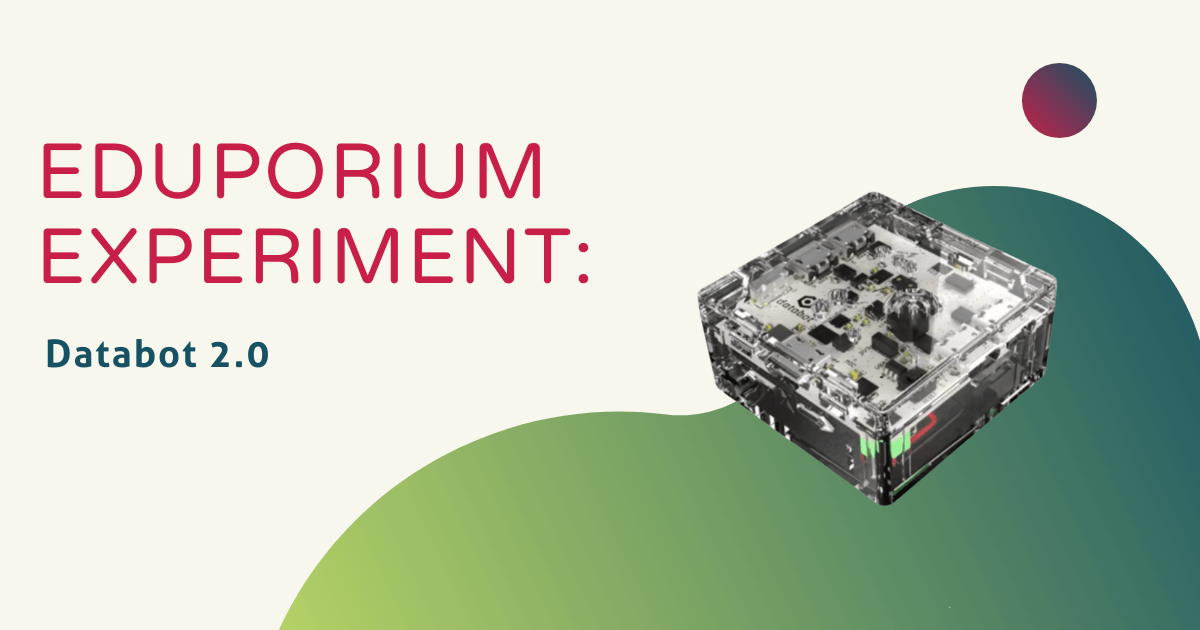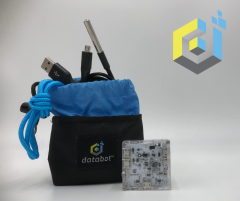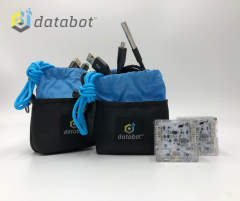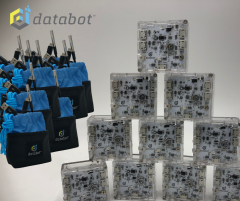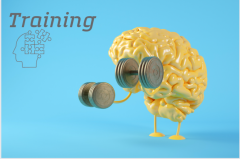Since its debut in 2019, the databot 2.0 Robot has had huge impacts on how middle and high school instructors illustrate key STEM concepts. One of the most adaptable tools in educational robotics, the all-in-one databot 2.0 provides almost infinite learning opportunities in coding, data collection, and even AI. In this Eduporium Experiment, we're digging deeper into the databot 2.0, what students can do with its 16 robust sensors, and how to use it in coding and STEM education.
Let's start with its design. Like the first databot, the databot 2.0 is square in shape but, unlike the original, it's not a perfect cube. While programmable, the databot 2.0 doesn't move around on its own like other classroom robots. However, its tough exterior and compact design make it easy for students to safely transport it anywhere—even outside. Unlike the original databot, the newer version does not require an external SD card, since all memory is fully built-in. And more importantly, the battery is twice as big with four times the run time! Along with its built-in sensors, databot includes expansion ports, including a UART and an I2C interface for third-party sensors and robotics integration. There's certainly plenty to do without expansions, though, as the databot also has three programmable LEDs and the ability to play musical tones.
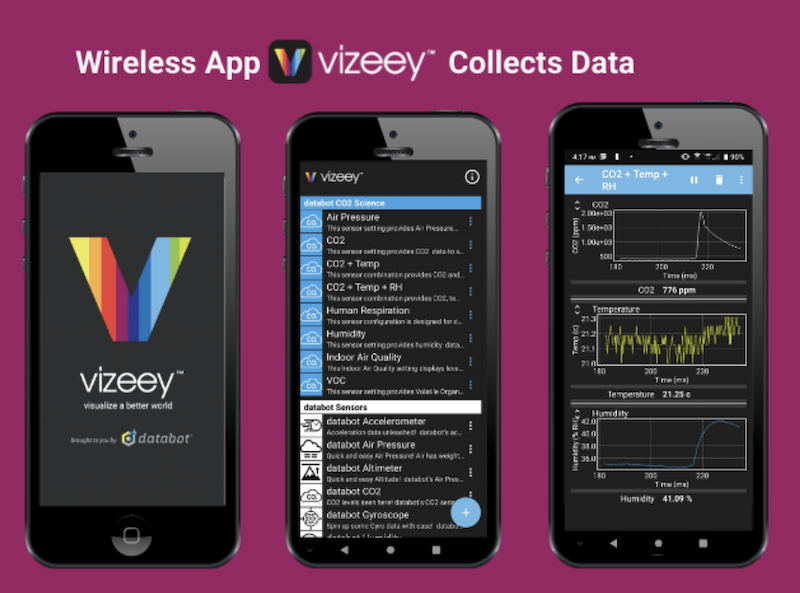
The databot pairs with many smartphones, tablets, and Chromebooks for students using Bluetooth Low Energy. Plus, it also boasts built-in Wi-Fi thanks to its upgraded processor. This allows classrooms to get their devices up and running in as little as 60 seconds. Using the Vizeey app and data visualizing tool, students can pair their databot with a computer or phone to instantly transform it into a wireless sensor. Once the databot is paired with the app, students can continue collecting data with the robot. However, they now have the option to stream data in real-time and explore new information types at the same time. The Vizeey app is an easy-to-use tool with a student-friendly integration process.
The databot's sensors: an overview.
Students can use the databot 2.0 in the classroom or in a remote learning environment. It comes with 16 onboard science sensors that are completely programmable. Using these sensors, students can collect data on anything from a room's light levels to air pressure or humidity. The full list of databot 2.0 sensors can measure: UV, sound, acceleration, air pressure, altitude, color, humidity, ambient light, gesture, magnetism, and CO2. It also has both short-range and long-range proximity sensors, a gyroscope, and an external temperature probe. So, yes, you could say there are a whole lot of STEM possibilities with the databot 2.0. To that end, educators can use it in earth science, life science, physics, and chemistry, teaching environmental literacy along the way.
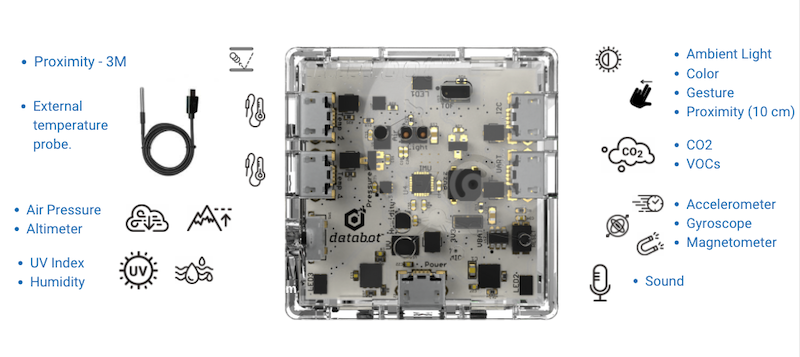
Valuable curriculum resources for teachers.
The databot 2.0 curriculum is available on the databot website in learning modules called Explorations. The website also includes other resources, such as the setup guide, design and coding challenges, and more. Educators and students can easily filter the curriculum library by grade level, type of sensor, or classroom subject. When using the databot 2.0 with students, walking through the setup guide with them is an ideal place to begin. We'll also share the most important things to do and know below.
Before starting, educators should ensure all databot robots are charged and ready for classroom use. Each databot kit comes with one individual micro-USB charger for every robot in the pack. It takes 60 minutes to fully charge the databot 2.0 and it lasts from four to six hours on a full charge. If you ask us, that ratio is pretty impressive. Students can even use the robot while it's connected to power. They can charge it with a standard wall phone charger or connect it to a USB port in their computer.
Getting started with the databot 2.0.
Once fully charged, students can turn the databot Robot on and explore the Vizeey app, which is available on iOS, Android, and Chromebook. The app loads experiments from QR codes available on the databot website. Students can click the '+' icon in the top right corner of the app on iOS or the bottom right corner on Android, then select 'Add experiment from QR code' to begin. The first QR code they'll need is pictured below. Scanning this code loads the basic databot sensor collection. From there, students can click the icon corresponding to each sensor to load various related experiments.
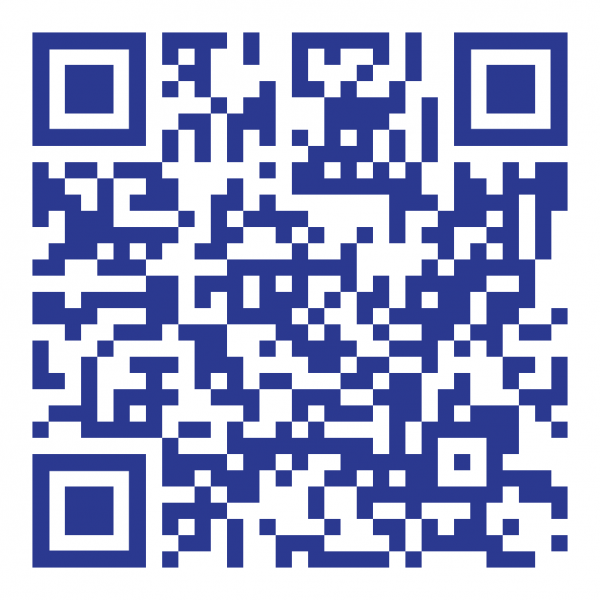
Ready to try an easy first experiment? With databot connected to the Vizeey app, students should click the app's CO2 icon, which looks like a little cloud. Then, after tapping the Start button, students will see a stream of data across the screen. This data measures the CO2 levels around the databot. If multiple databots are connected to the app, students can identify theirs by holding it close to the device and selecting the data stream highlighted in blue. To run the CO2 experiment, students should breathe on databot and watch the CO2 levels elevate on the app. They can then make scientific and environmental connections from the data. How is CO2 released into the air? What other activities besides breathing release CO2? What are the potential detriments of too much CO2 in the atmosphere?
Experience real-world data collection and programming.
From there, it's up to teachers to decide which sensors and science concepts to explore. Within the databot 2.0 curriculum, you'll find lessons in coding and sensing that integrate rich STEM experiences into everyday instruction with learning objectives, micro activities, experiment ideas, and more. In the Temperature challenge, students measure the heat generated by rubbing their hands together rapidly. Another activity tasks them with protecting databot from a magnet as they measure which materials block the electromagnetic field. Among other benefits, the NGSS-aligned curriculum enables students to build vital skills, like investigation, cause and effect, scale and proportion, presenting arguments, and more.
The databot 2.0 is also compatible with a Microsoft Excel add-on known as Data Streamer. With Data Streamer, students can stream live sensor data from their databot directly into an Excel spreadsheet. From there, they can record and analyze the data more easily, even creating custom graphs to display their findings. This expands potential uses of databot and enhances experimentation, play, coding, and more. It's also a great way to familiarize student with using spreadsheets, a skill that will serve them across future careers. Even the social media team at Eduporium uses spreadsheets—they're not just for the IT guy anymore.
In addition to the many opportunities for using the sensors, students can also use databot 2.0 for coding lessons. Code databot to flicker like a candle, change colors based on the surrounding environment, or play Capture the Flag! Students can program the databot using Scratch coding, in Python, and through the Arduino IDE. The variety of coding options teaches not only practical programming and robotics but also logical thinking and problem-solving skills. As they practice physical computing with this tiny bot, students can even incorporate machine learning. Using Python and machine learning principles, students drive a virtual car with their keyboard, then use the data to teach the car to drive autonomously. In a world with AI on the rise, becoming familiar with programming and machine learning gives kids a head start on any STEM career.
Using the databot 2.0 across the curriculum.
The databot 2.0 is a powerful machine, but it's also accessible for students as early as fourth grade. However, there are also so many high school and CTE opportunities packed in. For specific classroom robotics projects, kids can program the databot's RGB LEDs, write programs for its tone generator, and, of course, creatively use the 16 databot sensors to collect and investigate data up close and in real-time. It's perfect for elementary, middle, and high school science classes and superb for expanding CTE programs with added computer science opportunities as well, including in physical computing, data science, AI, and machine learning.
If you are interested in learning more about the databot 2.0 or its curriculum, you can find the kits on our store! Also, if you have any questions about how it might fit into your classroom, afterschool program, or summer STEM camp, please reach out to the Eduporium team at any time. We can offer consultation, advice, and our insights into why the databot 2.0 is one of the best robots for classroom STEM; provide quotes for new databot Robots; and help you get started with teaching students new coding skills. Follow us on Twitter and Instagram for more.



